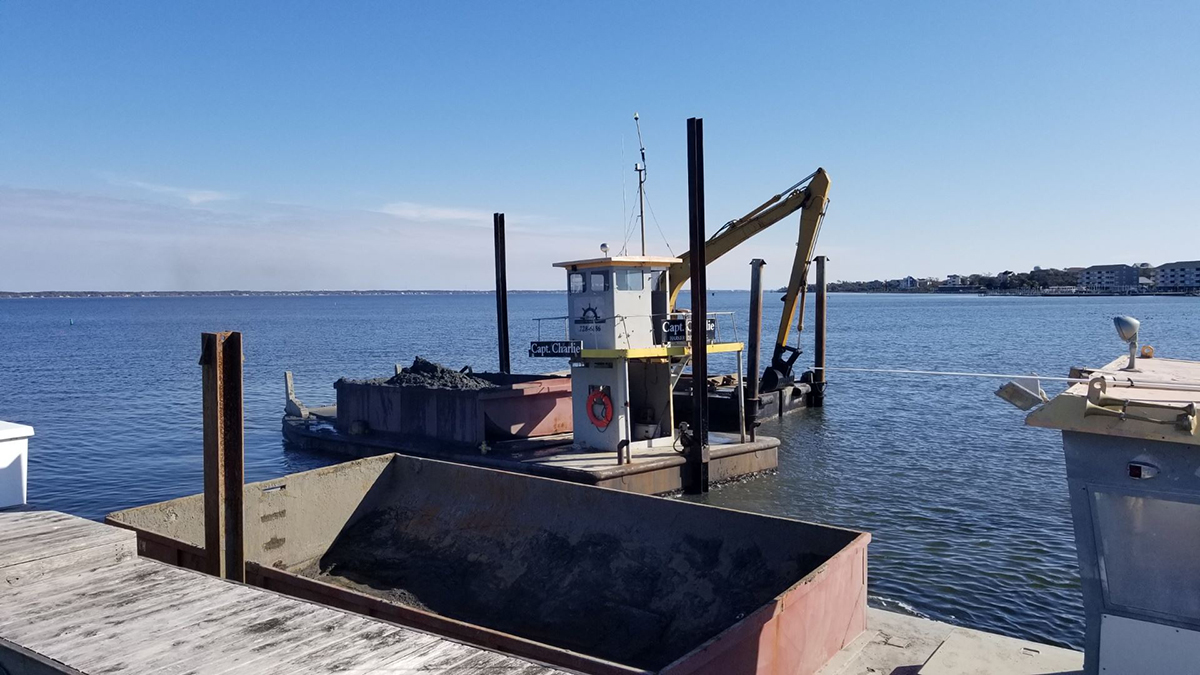
More than two years have passed since the Army Corps of Engineers announced that only sand pumped from federal projects could be placed in Corps-maintained dredged material disposal sites, leaving local governments, marinas and private property owners the challenge to find land on which to put sand removed from clogged waterways.
Since then, state and Corps officials have been working on a plan to identify nonfederally maintained sites, information that may be rolled out incrementally in the months leading up to the release of the first phase of the plan, according to Todd Horton, the Corps’ deputy chief of navigation.
Supporter Spotlight
“Our goal right now is to have our entire project completed by February 2022,” Horton said earlier this month in a meeting hosted by the North Carolina Division of Water Resources.
He said that, to date, the Corps has identified a little more than 20 nonfederal placement sites, the majority of which were initially constructed on state-owned property by the Corps to be used as disposal areas. At some point those properties were turned over to private owners.
A geographic information system, or GIS, database has been created to map each site and include information, such as how much sand a site can hold, and will eventually be placed on a website hosted by either the Corps or the state.
That database is part of the state’s dredged material management plan.
As part of that plan, the Corps will evaluate the dredging needs of nonfederal users for the next 20 years.
Supporter Spotlight
The Corps’ Wilmington District is currently gathering that information, calling marinas to assess where they’re dredging, how often they’re dredging and where they’re placing dredging material.
“As of now we’ve contacted 78 marinas requesting data of which we are about 65% complete collecting data from those sites,” Horton said during the June 9 meeting.
The Corps has identified 75 other entities with marine facilities, including homeowners’ associations and hotels with large marine docks, to contact.
“We haven’t reach out to those 75 facilities yet, but we will in the next few weeks,” Horton said.
Wilmington district officials announced in late 2018 that sand dredged in nonfederal projects could no longer be placed in Corps-maintained facilities.
That decision was made based on the Corps’ February 2017 guidance to conserve space within its disposal sites after millions of cubic yards of material dredged from nonfederal projects were placed in a single dredged material placement facility in Galveston, Texas.
The Corps manages more than 200 dredged material placement facilities totaling more than 5,000 acres in North Carolina. Some of those sites have not been used while others are nearly full.
It is unclear exactly where and how material from nonfederal dredge projects are being disposed.
Such work has to be permitted by the state Division of Coastal Management. The terms of a permit include where material is to be placed.
That information was not available in time for publication of this report.
In Carteret County, the county’s shore protection office has been creating its own list of potential disposal sites.
“We’re looking for properties that have enough land to take all this material,” said Greg “Rudi” Rudolph with the county’s shore protection office.
Potential disposal sites have to meet certain criteria, including road access to the property, proximity to the channel being dredged and capacity. And, the property owner has to be willing to take the dredge spoil free of charge.
“In return, it’s theirs,” Rudolph said.
For one of the county’s more recent dredging projects in Old Ferry Channel in Bogue Sound, dredge spoil was placed on a little more than 1 acre of private property off Bay Shore Drive in Cape Carteret.
The project completed in early April dredged more than 24,000 cubic yards of sand from shoaling hot spots along a little more than 11,300 feet of the channel. The dredged material was the equivalent of about 2,100 dump truck loads.
Under the Coastal Area Management Act, or CAMA, major permit terms, silt fences had to be placed on the property to catch runoff. Material could not be piled higher than 6 feet above grade and then had to be seeded.
In all, Carteret County has completed six dredging projects – three large projects dredging more than 1,000 cubic yards and three small projects of about 1,000 cubic yards, Rudolph said.
The county has relied on grants from the state’s Shallow Draft Navigation Channel
Dredging and Aquatic Weed Fund to help cover the cost of dredged material disposal.
Rudolph said he applauds the creation of regional disposal facilities, the need of which is only going to grow as building continues in coastal areas.
Carteret County has 80 miles of oceanfront, 1,738 miles of estuarine shoreline, 506 square miles of land and 834 square miles of water.
“So, we’re more water than land,” Rudolph said. “There’s only so much land so possibly more of the vacant land around here is going to be used more in the next five to 10 years.”







